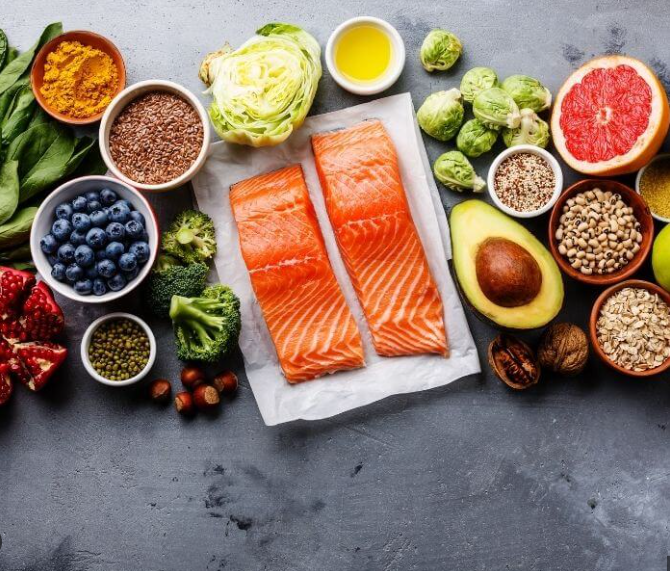Nutrition is deeply personal. The foods that give one person energy may leave another feeling sluggish, and that is why so many people are beginning to explore personalized nutrition plans. Instead of following generic diets with strict rules, a personalized nutrition approach focuses on balance, flexibility, and listening to your body. It encourages eating in a way that matches your lifestyle, culture, health needs, and preferences. This guide takes you through the concept of personalized nutrition, why it matters, and how you can build a plan that feels natural and sustainable.
Why One-Size-Fits-All Diets Don’t Work
Many diet programs promise fast results with the same rules for everyone. Some encourage cutting out entire food groups, while others focus on eating very little. These methods might show short-term changes, but they rarely last because our bodies are not identical. A plan that works for your friend may not work for you, and vice versa. There are several reasons for this. People have different body types and metabolic rates. Lifestyle also plays a role. Someone working a desk job will have different energy needs compared to someone who is on their feet all day. Culture and food preferences also matter. For example, a plan that avoids rice may not feel sustainable for someone who grew up eating it daily. Emotional connections with food also shape how we eat. Because of these differences, generic diets often fail, leaving people frustrated. Personalized nutrition avoids this cycle by respecting individuality.

The Science Behind Personalized Nutrition
Personalized nutrition works by considering multiple factors. Genetics influence how your body processes certain nutrients. Some people may digest carbohydrates efficiently, while others are more sensitive to them. Metabolism also plays a role because the rate at which you burn energy affects how much food your body needs. Gut health is another important factor since the bacteria in your digestive system can impact digestion, mood, and overall well-being. Age, gender, and activity level all add layers to your unique nutritional needs. While advanced tests can provide precise data, you can start without them simply by observing how different foods affect your energy, mood, and digestion.
Benefits of a Personalized Nutrition Plan
The advantages of having a plan tailored to you are numerous. Eating in alignment with your body can improve energy, making it easier to stay active throughout the day. It can also support better digestion, helping to reduce discomfort such as bloating or irregularity. Instead of focusing on drastic weight changes, personalized nutrition encourages natural balance, which is easier to maintain over time. Emotional wellness also improves because when you enjoy foods you love without guilt, you build a healthier relationship with eating. Most importantly, these plans are sustainable, which means they are easier to follow long-term.
Steps to Create Your Personalized Nutrition Plan
The first step is to know your starting point. Keep a food journal for one week. Write down what you eat, the time you eat, and how you feel afterward. Patterns often emerge. You may notice that certain foods make you feel tired, while others give you steady energy. The second step is to set realistic goals. Instead of extreme changes, aim for goals like improving energy, reducing discomfort, or adding more vegetables. The third step is to respect your food preferences. A personalized plan should never feel like punishment. If you enjoy bread, for example, you can explore whole grain options instead of cutting it out completely. The fourth step is to build balanced meals. A simple structure is the plate method: half your plate with fruits and vegetables, one quarter with lean protein, and one quarter with whole grains or starchy vegetables. Healthy fats like olive oil, nuts, or avocado can be added in small amounts. The fifth step is to listen to your body. If you feel low energy, anxious, or overly hungry between meals, it may be a signal to adjust portion sizes, timing, or food combinations.

Approaches Within Personalized Nutrition
Different approaches can guide you depending on what feels best. Mindful eating focuses on slowing down, noticing hunger signals, and enjoying food without distraction. Intuitive eating emphasizes trusting your body and removing guilt from food choices. Macro-based planning involves adjusting carbohydrates, proteins, and fats depending on your lifestyle and energy needs. Plant-forward eating prioritizes vegetables, fruits, legumes, and whole grains, while still allowing for flexibility. Lifestyle-focused adjustments mean shaping meals around your daily routine, whether you are a busy professional, a student, or a parent.
The Role of Lifestyle in Personalized Nutrition
Food is only part of the picture. Lifestyle habits also affect how your body responds to nutrition. Sleep is a major factor because poor sleep affects hunger hormones and can lead to cravings. Movement helps your body process nutrients more efficiently. Stress management is essential since high stress levels often trigger emotional eating. Hydration is another often overlooked element. Drinking enough water supports every system in the body. Combining personalized nutrition with these lifestyle habits creates a foundation for long-term health.
Practical Tips to Get Started
There are many small actions you can take right away. Planning ahead helps you avoid grabbing less balanced options when busy. Prepping snacks like fruit, nuts, or yogurt ensures you have something nourishing on hand. Experimenting with new foods keeps meals exciting and prevents boredom. Flexibility is key—enjoying dessert occasionally is part of balance. Staying consistent is more important than being perfect every day. If you feel unsure, consulting a registered dietitian can give you additional insight tailored to your needs.

Real-Life Examples
Anna, a marketing manager, used to skip breakfast and rely on fast food. Her personalized plan included simple overnight oats for mornings and balanced lunches she could prepare quickly. She noticed better energy and focus within weeks. James, a college athlete, needed meals to match his training. His plan included smoothies with protein and fruit, hearty rice bowls, and hydration goals. He experienced better recovery and improved concentration in class. Maya, a mother of two, struggled to cook separately for herself and her children. Her plan centered on shared meals such as stir-fry, baked chicken with vegetables, and whole grain pasta. This made healthy eating simpler for the entire family.
Overcoming Challenges
Even with the best intentions, challenges arise. Cravings are common, but they can often be managed by choosing healthier alternatives such as dark chocolate instead of candy. Eating out can be handled by making thoughtful choices such as choosing grilled over fried items or water instead of sugary drinks. For busy schedules, batch cooking on weekends saves time during the week. Plateaus are also normal; adjusting portion sizes or meal timing can help keep progress moving.
A Friendly Long-Term Perspective
Personalized nutrition is not about perfection or following rigid rules. It is about understanding what helps you feel your best and creating a lifestyle you can maintain. Instead of seeing it as a temporary plan, think of it as a lifelong relationship with food. Over time, you will notice that eating becomes less about restriction and more about balance, enjoyment, and well-being.






